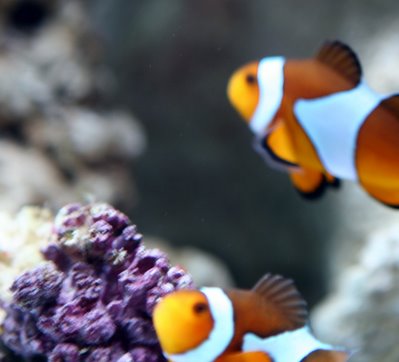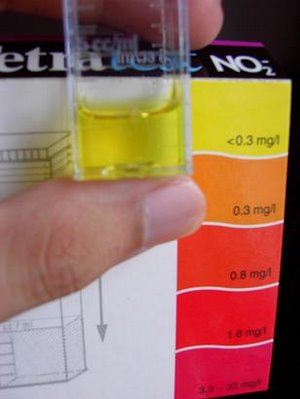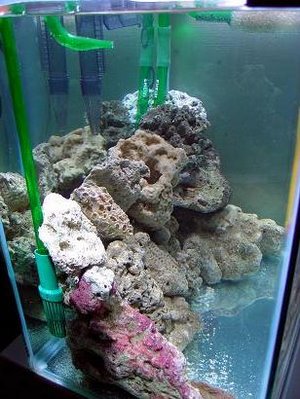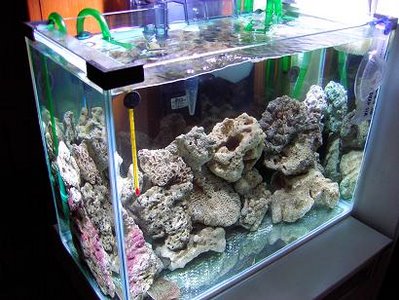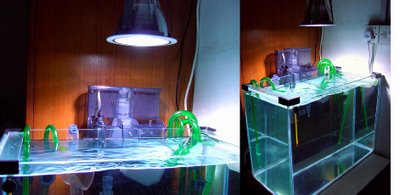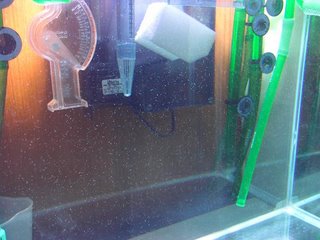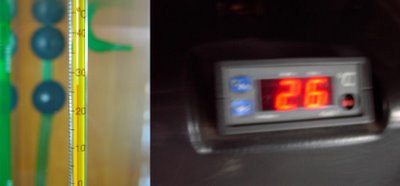
In my blog I've always made it a point to explain aquarium maintainence using simple science because I believe that everybody have some basic scientific knowledge and by demonstrating that such simple and basic knowledge can actually be applied in reef keeping, it will make this blog more interesting and easier to relate to.
Maintaining an aquarium reminds me of secondary school chemistry. There was a topic called QA or qualitative analysis where you test for the prescence of certain chemicals with reagents. Alot of colorful chemical reactions.
Today I did a pH test. If we all recall, the pH scale ranges from 1-14. 1 being the most acidic, and 14 being the most basic/alkaline. What I have here is a pH indicator, almost like a universal indicator. Universal indicators give absolute value readings of pH 1,2,3,4 etc. The pH indicator here with me is specially catered for alkaline solutions and it gives a reading to an accuracy of one decimal place. Sea water unlike freshwater is alkaline and its pH ranges from between 8.1-8.3. I usually try to keep the tank's pH at 8.3.
From the pictures you see that the indicator is actually orange, but as i dripped it into the vial with aquarium water, it changes to take on a blue tint. Matching that with the chart, we see that the pH is actually 8.0, not all that perfect. I'd need to raise it up to 8.3 somehow. How am I gonna do that? Well we'll discuss that soon enough.
What else happened? Thanks
Roger for giving me some very pretty rocks. I met Roger from the forum, was a quick deal, i texted him, he said come get the rocks and I did. Very friendly chap, spent a while admiring his tank while i was at his office. My rock scape looks alot much more natural now with those small itsy bitsy ornamental pieces. Pictures another time.



